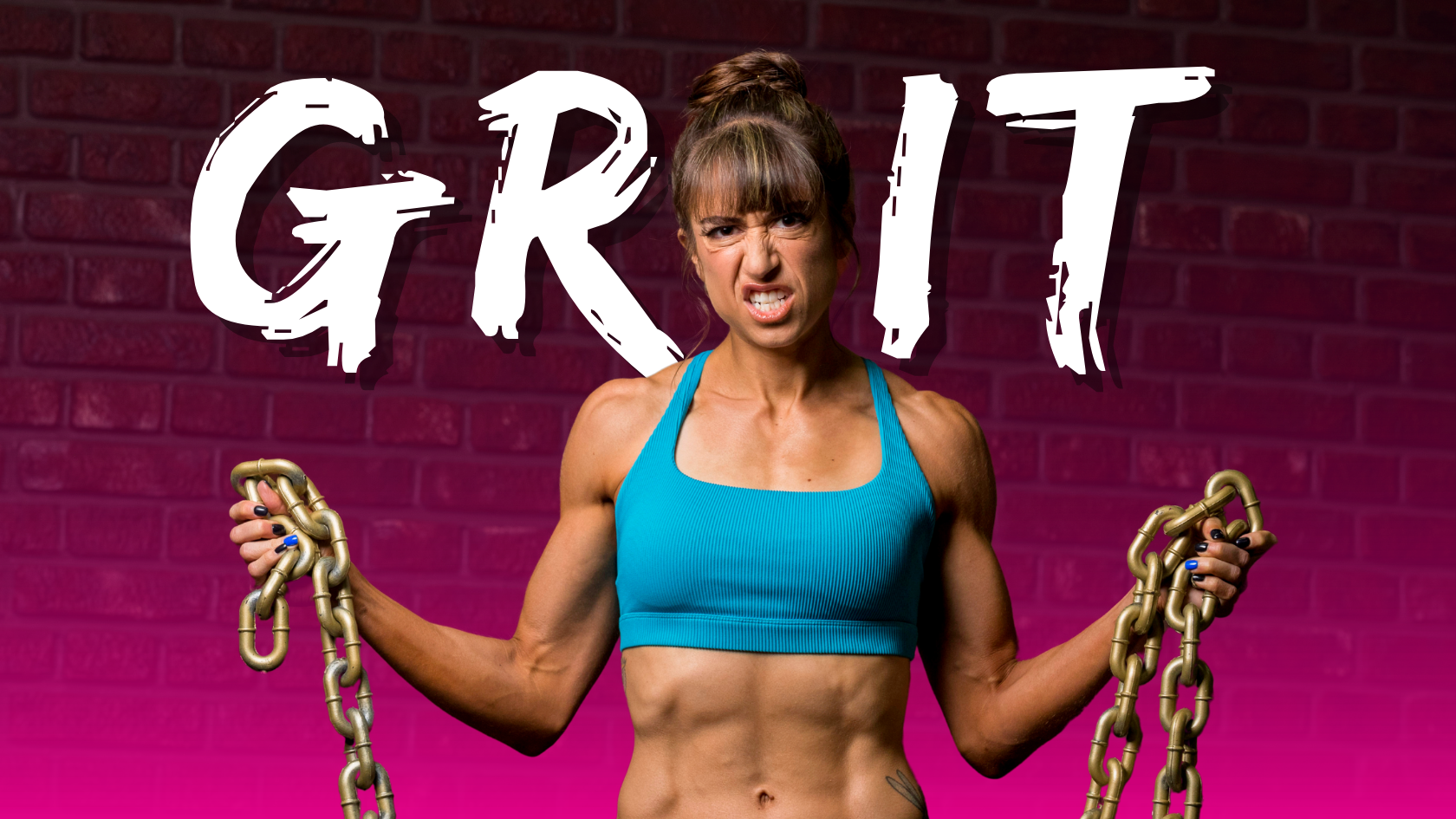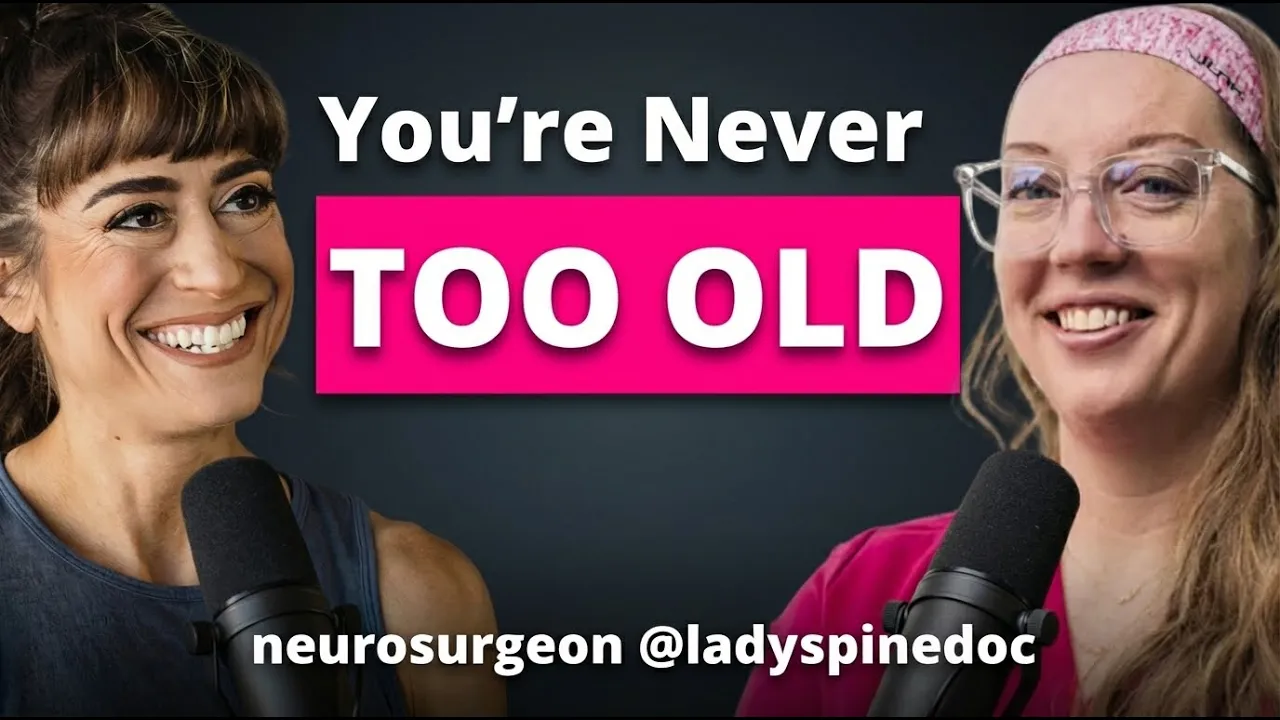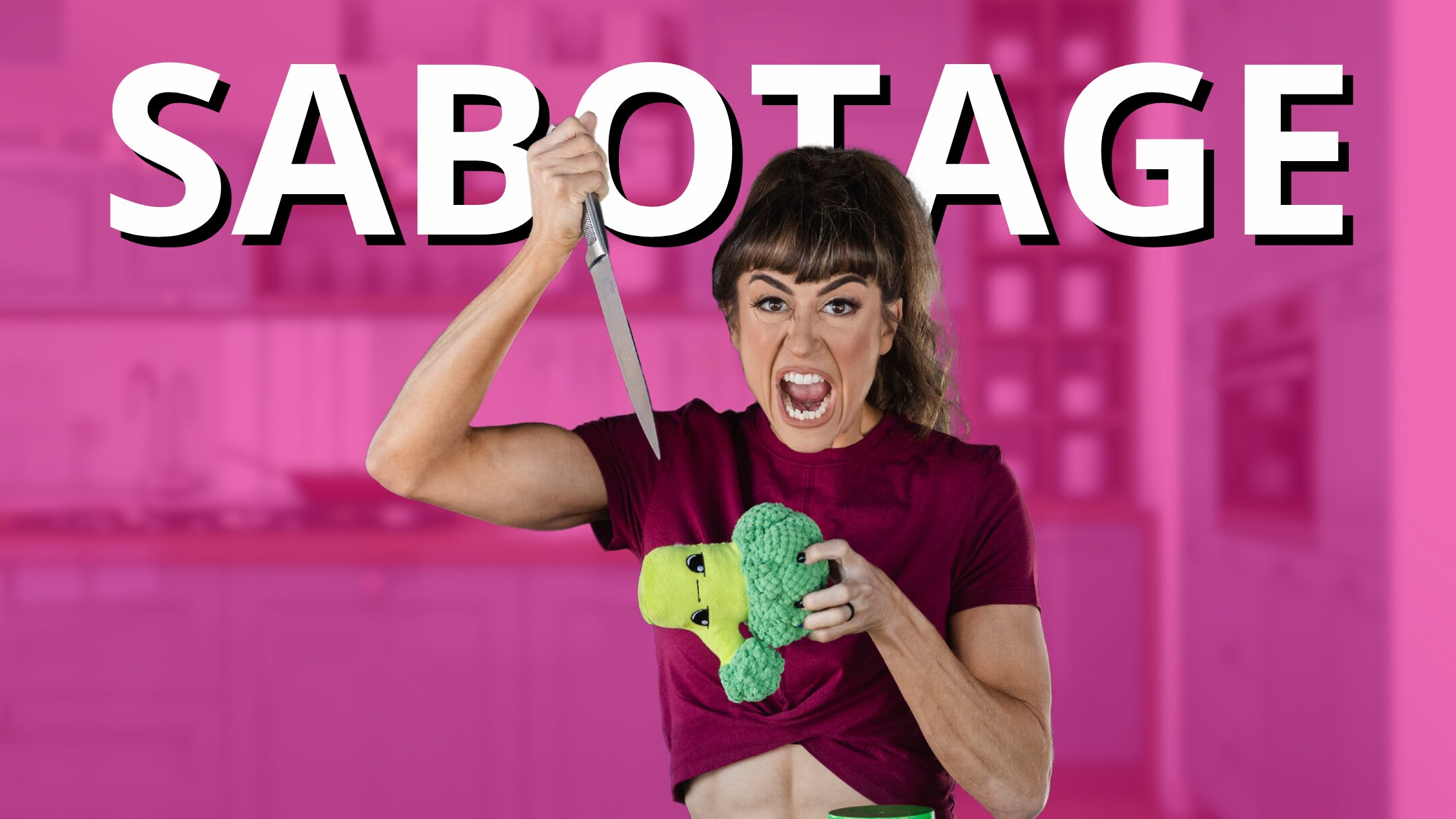Change Requires CHANGE
If you’re feeling stuck and know deep down that you could be doing better, don’t wait any longer. Your life is not going to change until you take action and make a bold move towards your goals. If you’re ready to take control of your life and start moving towards the results you want let us help you achieve your goals. ⬇️
Change Requires CHANGE
If you’re feeling stuck and know deep down that you could be doing better, don’t wait any longer. Your life is not going to change until you take action and make a bold move towards your goals. If you’re ready to take control of your life and start moving towards the results you want let us help you achieve your goals. ⬇️
Transcript:
Open Transcript:
Cori (00:00):
Welcome to the Redefining Strength Podcast. Everything you need to succeed on your health and fitness journey, even the stuff you don’t want to hear. Grit isn’t something you’re born with. It’s built from every setback, from every straight knee, from every struggle that you overcome. Your strength is really revealed through what you prove possible to yourself. And grit is the same way. It isn’t the absence of struggle, it’s struggle plus that comeback. And I want to talk about five steps to really building grit. We’ll call it your grit builder framework even. Because so often we don’t give ourselves credit for all that we have conquered, and we don’t realize in reflecting back on previous wins that there was the struggle involved. We just see the outcome. But if we want to get stronger, if we want to achieve more, we have to have that grit and that ability to come back after that setback, and it’s all built.
(00:56):
And I want to go over a framework to help you do that. There’s also a great PDF so that you can really go through all these different questions and write down your thoughts about everything in the show notes. So check that out as well. But step number one, it’s proof of power. So I just said that grit is built, but the crazy thing is, as much as it’s built, it’s already there, all the foundation, all the building blocks, you already have them. You have the ability to overcome anything you choose to overcome, and a lot of this is tied to our perspective, opportunity, or obstacle. How are we seeing the thing when something happens? Is it happening to us or for us? Is it a lesson or are we simply letting ourself become the victim? Grit, yes, is built through us showing ourselves the grit we already have inside of us.
(01:50):
So the more we can recognize our own, show ourselves, proof of our own power, the better off we’re going to be. But it’s recognizing that we have the ability to reframe any situation and overcome it if we choose to. But this requires us to step back. It’s not easy by any means, but anytime you’ve hit that hard, recognize it, own it. Say, yes, this is a struggle, but how can I move past it? How can I break down habits that might seem too hard right now? How can I find a way around, how can I avoid this even in the future? Use that reflection so that you can move forward and you can show yourself the grit that’s already there for you. And I mean, even think about it before I move on to step number two, think about all the hard things you’ve actually already overcome, all the wins you’ve already had, there were struggles in those things.
(02:39):
You just managed to grit your way through them. So go back to all those things. How did you show yourself your grade, even reflect on ’em. But you can do hard things and you’ve proven that in all that you succeeded in so far. Now, step number two, the turnback point, and I mentioned reflection already because it’s really key that we reflect on all the struggles we have, even the wins we’ve had, the hard things that we have accomplished, the comebacks we have had, because in all those times that we’ve succeeded, we’ve pushed through that turnback point, but in all the times we haven’t succeeded, we’ve turned back and it’s probably at a similar heart. So what I mean by that is not that. It’s like, oh, I cut out carbs this time and this time I cut out fat. And those are different things, right?
(03:22):
It’s this fact that it’s the same heart and that it’s restriction. I have restricted to this point where I’m no longer comfortable with this restriction or it no longer fits my lifestyle balance, and so I turn back. So recognizing the commonality between those different things can help us realize that we always hit the same type of hard and turn back to allow us to push through. Because so often our struggles where we fall down and we can’t seem to pick ourselves up to conquer is really the same thing just disguised in different ways. It’s the same mindset repeating. It’s the same pattern repeating. You might even notice it’s the same timeframe repeating. You always get to those six weeks and at the end of the six weeks, you just can’t seem to keep going. Whether it’s self-sabotage with having succeeded enough and being like, oh, I can let this one thing go, or it’s not having seen results fast enough.
(04:07):
At that point, it might even be a timeframe that we just don’t seem comfortable pushing through with habits that we get bored with them. We feel the monotony, but recognize that pattern and that turnback point because the more you can and the more you say, Hey, I’ve been here before at the heart, you can then make that choice to push through this time. And that’s where that struggle really becomes something that you can overcome. You see the opportunity in keeping going where you would normally give up, but it’s recognizing that it isn’t a wall. It’s a door that’s maybe even a little stuck, that if you just push a little bit harder, you can make your way through. Then step number three is reframe the failure. Having grit again, isn’t the lack of struggle. It’s having struggles and overcoming them, but sometimes it takes multiple takes, multiple tries to overcome that struggle.
(05:01):
But that’s where we really need to reframe the failure and realize that we’re only failing if we’re not picking ourselves up. Success is struggle. So every time you hit that hard, every time you fall down, instead of seeing this as the end, this as that wall, see it as that sticky door. How can you push harder? How can you learn from it? How can you shift that perspective from obstacle to opportunity? Again, are things happening to us or for us? And the more we see any failure as a learning experience and the best learning experience possible, the more we’re going to move forward because it really is. Failure is really learning with frustration. It’s stinky, but it’s truly the case. So the more we can really reframe it, the better off we’ll be. It’s like when you get a flat tire. I use this analogy a lot when we talk about mistakes we’ve made with our diet.
(05:55):
We have something off plan. We get a flat tire, but instead of pulling over to the side of the road and fixing it or calling a tow truck or aaa, we go slash the other three. We go eat everything in sight because we already ruined the day. But when we have a failure, the more we just pull over to the side, we get that flat tire, we assess why did this thing initially happen. The more we can learn from it without causing other issues and setting ourselves back. We don’t want to just light the car on fire. There’s no way we’re going to move forward then, and we’re going to end up holding ourselves back, even be more frustrated. We’re potentially not going to want to implement some of the habits that we really need because now they’re associated with such a negative thing of being so miserable of failure.
(06:33):
So we want to reframe it as, I just got a flat. What can I do to move forward as fast as possible? Call aaa, fix it, replace it, put on the spare, right? Don’t go slash the other three tires or light the car on fire then, and this is one of the most interesting, I think, steps in it is really step number four is creating that B at origin story. So I call it the beast at origin story, but it’s really an assessment of where you are currently. It’s understanding your current pain, your current desire to change, but your current lifestyle as well. Because when we think about building grit and we think about overcoming things, there is only a certain amount of grit we have, right? A certain amount of desire to push through a certain amount of discomfort we are willing to embrace.
(07:16):
And the more we understand where we are truly starting from and the pain of staying stuck, the more we will embrace the pain of change, but we can also adjust the pain of change to really fit what we need to make it easier to gr our away through. Because there is only so much we can push ourselves into the hard before we do turn back that pushback against us becomes too much. So I want you to really outline where am I at currently, right? You’ve thought about proving the grit that you already have inside you by looking at hard things that you’ve already overcome, potentially you’ve looked at the cycle that you repeat and where you usually turn back. You’ve started to think about how you can reframe failures. Now think about where you’re at. What is that first step into the hard that you can grit your way through that you have that ability to push into the hard.
(08:05):
It’s sort of that grit is fit. You have to have enough grit and it has to fit the situation and pushback that you’re dealing with because no matter how much you really want something, if that hard is just too much, you’re potentially not going to have the grit yet or have proven that you have that grit yet to yourself to push through. So the more you own where you are, the struggles you have, the pain of staying stuck, the more you’re willing to embrace the pain of change and the more grit you’ll find that you really do have to push in the hard, but the more you can adjust that pain of change so that it really meets you where you’re at. I think about this in terms of some of the hard habit changes we make. Tracking, tracking itself might be hard without you even changing what you’re currently eating.
(08:45):
And so that’s where we can get the effort doesn’t equal outcome thing where we’re giving a lot of effort to just track, but we’re not actually making any changes yet to our diet. And so then we can feel like we’re not getting the result we want while we’re trying really hard. But trying hard doesn’t mean we’re actually making changes. So that’s where we have to assess, okay, I’m grading my way through just tracking and I’m not seeing results snowball. Well, how can I make tracking a little bit less challenging so that I can make a few more changes to actually see that momentum build? Am I applying grit in the right way? But that really comes back to understanding where you’re starting from. So outline that B at origin story. And the fifth and final step is really grit in action. What is one small action you can take today to overcome a hard to overcome a struggle?
(09:31):
And it might be something small. It might be that you’ve really just struggled recently to drink more water. So you just put that water out first thing in the morning and you drink it. And that is you’re griding your way through a harder change for you. And sometimes hard changes aren’t really hard changes. They’re just something mentally we can’t get ourselves to do. They’re just something we can never seem to prioritize. So finding that way to prioritize it, but you need to prove to yourself that you have that grit, right? It goes back to step number one in order to want to build that momentum because success breeds more success when we get that momentum going. The more you do, the more you do, right? If you’ve been skipping your workouts, it’s a lot easier to skip your workouts when you’re in the consistent routine of doing your workouts.
(10:08):
Not only do you keep doing your workouts, but you tend to want to do a lot of other things. So if you’ve struggled to prove to yourself that you have this, that you can overcome these things, really go back to the foundation of the habits that you have. What are habits that you’ve built in the past? And this is again, drawing from those steps. But what is the hard that you’ve already overcome? What’s a habit that you’ve implemented? How did you implement it? How did you shape your environment? How can you now put that into action to help show yourself your grit to keep moving forward? And I think it’s really key. We pause and reflect on all these different things and write down some of our ideas, but even go back to times we’ve succeeded and times we failed in the past because we can learn so many lessons from them.
(10:48):
And again, it’s not thinking, oh, well, I failed with dieting because I had to cut out carbs, and this time I’m cutting out fat so I get all my carbs. That’ll be better. No, no, no, no. Really assess what’s underneath that. Don’t just go surface level. When you’re reflecting on these different things, dive deep and I mean uncomfortably deep, even in your B at origin story of really understanding the cost of staying where you are right now. And you might think, well, it’s only five vanity pounds. Does it really matter? Okay, well, have you not been taking pictures? Have you not felt good in your clothes? Have you not proven to yourself that you deserve to care about those five pounds? Right? There’s so many other whys often attached to things, even just us saying, Hey, this is something I’ve wanted and I’m going to prioritize doing it for myself.
(11:29):
Because that prioritization of self, that feeling that we deserve more, even if it is something that, hey, it’s not life or death, that allows us a lot of times to build confidence and strength and that grit to even overcome other hards in other areas of our life. But I want you to take some time to really reflect on all of these different things. And I think in doing that, you’ll realize not only some underlying mindsets that are holding you back, but the habit and environment that you’re creating that’s holding you to this old identity. And then this even comes back to, you have to act as if you have that grit. You can’t just fake that you have the grit. You can’t just say, I have grit. You’ve got to prove it to yourself through your actions. And a lot of times, smaller actions than you think really pay off. But just recognize that struggles aren’t bad. They give you that chance to prove to yourself that grit through how you can come back from them. But you got to picture yourself back up, and you got to realize that you can see opportunity and obstacle. It’s all in your perspective. And whether you choose to learn lessons from those failures or succumb to them.
*Note: This transcript is autogenerated there may be some unintended errors.







0 Comments